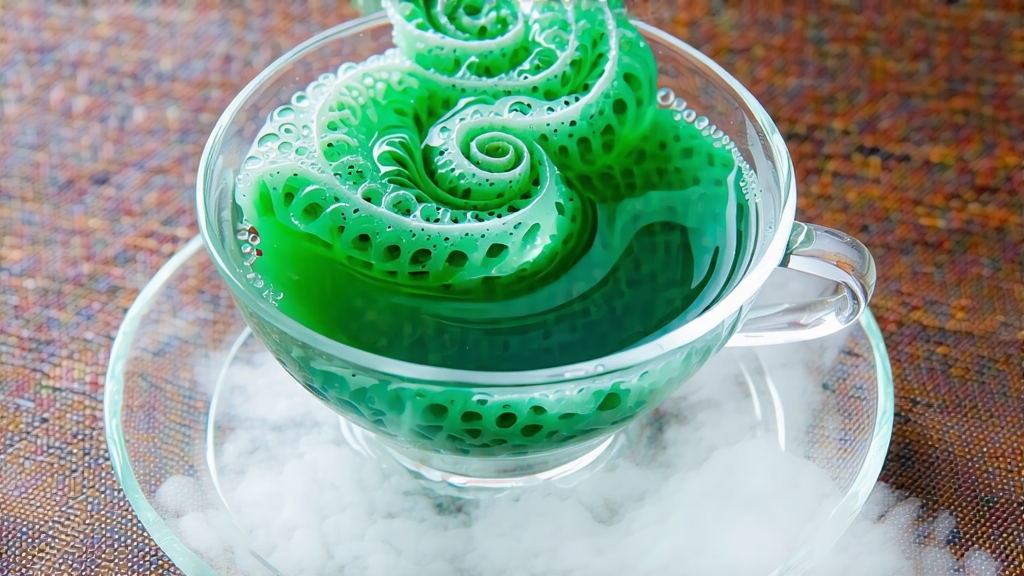
Tucked between the mist-laden hills of Dongting East Mountain and the gentle shores of Taihu Lake in Jiangsu Province, Biluochun—literally “Green Snail Spring”—has been seducing tea lovers since the late Ming dynasty. Legend claims a tea picker ran out of basket space and tucked fresh shoots between her breasts; the warmth released an irresistible perfume that startled a passing monk, who christened the tea “Astounding Fragrance.” Whatever the truth, the name was later softened by the Kangxi Emperor, who judged the tiny, spiral-shaped leaves to resemble green snails and praised the tea for brewing “the first spring of the year.”
Biluochun is not a generic green tea; it is a micro-terroir product. Only leaves picked within a 12-kilometer radius of Dongting’s peaks are granted the protected-origin label. Two cultivars dominate: the local “Xiao Ye” (small-leaf) strain that concentrates aromatics, and the hardier “Fuding Da Bai” grafted in the 1970s to boost yield. The former gives the classic orchid-and- apricot bouquet; the latter offers a lighter, peach-skin note. Purists insist on the Xiao Ye plucked before Qingming, when each bud still wears a downy cloak and carries the winter’s stored sweetness.
Crafting Biluochun is a dance of heat, pressure, and timing that must finish within four hours of plucking. First, the “sha qing” kill-green wok is heated to 180 °C, hot enough to blister a careless palm. The tea master tosses 250 g of buds in a bamboo tray, judging moisture by ear: a sharp pop means too much water; a soft sizzle is perfect. After 3–4 minutes the leaves are snatched out, then immediately rolled into tight spirals on a rattan mat. Here strength matters: 3 kg of downward pressure coaxes sap to the surface, coating the leaf in a fragrant film that will later bloom in the cup. Finally the “ti mei” low-temperature drying phase drops the leaf moisture to 5 % while locking the curl. Veteran fryers judge readiness by pinching a cooled leaf—if it crumbles into a crescent moon, the tea is done.
Brewing Biluochun is an exercise in restraint. A 200 ml glass or gaiwan, 3 g of tea, and 80 °C water are enough. Pour along the wall to avoid scorching the down, then pause. The spirals sink, then rise like green comets, slowly uncoiling to reveal the intact “one bud with one leaf” pluck standard. After 45 seconds the liquor turns the color of early morning willow—pale chartreuse with a silvery rim. Decant fully; prolonged contact extracts tannin that masks the tea’s hallmark sweetness.
Tasting begins with the “dry nose.” Warm the empty cup; a burst of lychee and ripe loquat should leap out, a perfume so vivid that first-time drinkers often swear syrup was added. Sip, letting the liquor rest on the tip of the tongue; the amino acid-rich buds trigger umami akin to dashi, followed by a cool, mint-tinged finish that Chinese texts call “gao shan yun”—high-mountain rhyme. The third infusion often surprises: a whisper of sweet cream appears, evidence of the leaf’s inner lipids released under gentle heat. Professional cuppers look for “three greens and three whites”: green buds, green liquor, green infused leaf, plus white down on bud, white froth on surface, and white halo at cup’s edge.
Storage is critical. Biluochun’s surface aromatics volatilize fast; at room temperature the signature fruit note collapses within six weeks. Vacuum-seal in 5 g sachets, flush with nitrogen, and keep below –5 °C. When opening, allow the unopened pouch to warm for four hours to prevent condensation that re-activates enzymes and dulls brightness.
Beyond the cup, Biluochun has inspired culinary cross-overs in Suzhou: chefs smoke river shrimp with the leaf, and pastry chefs fold the powder into mascarpone for a spring tiramisu. Yet purists prefer the simplest pairing—spring water from Tiger Hill and silence, so the tea’s quiet dialogue with the drinker can unfold.
In today’s market, machine-rolled imitations sell for a tenth of the hand-made price, but the difference is audible: real Biluoch